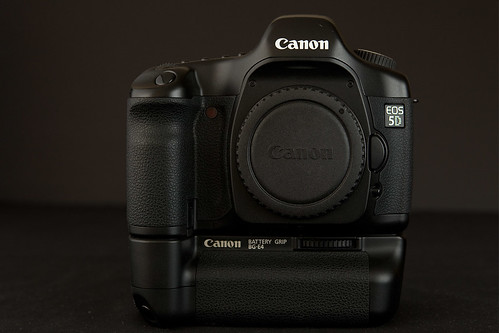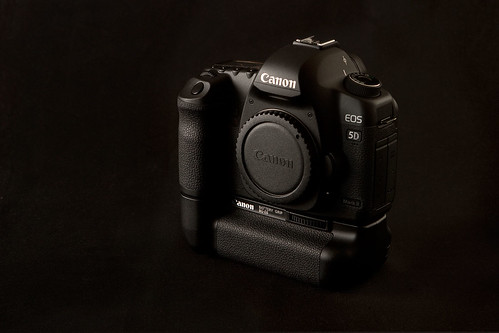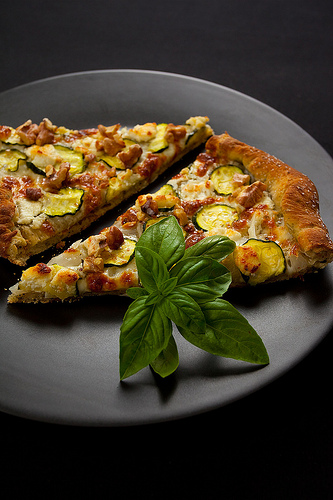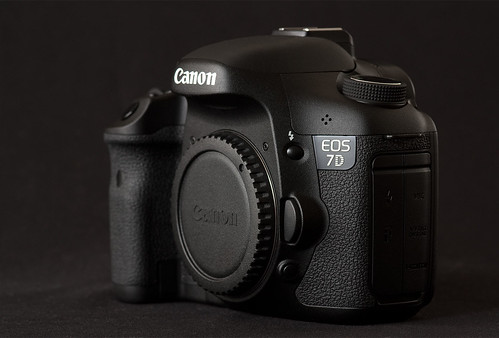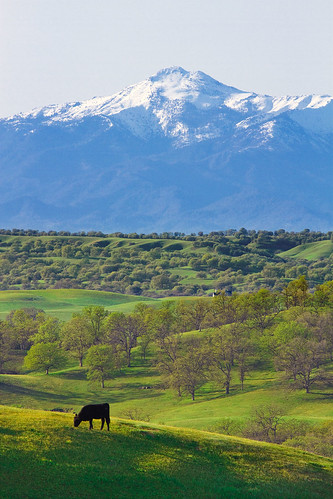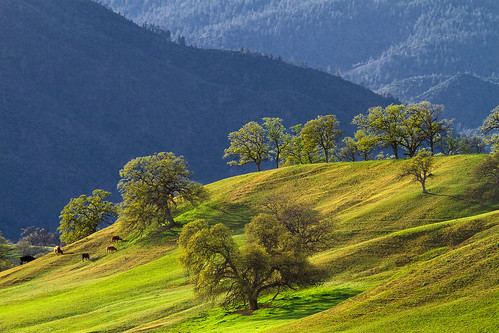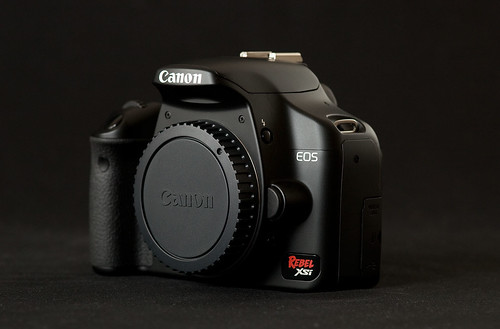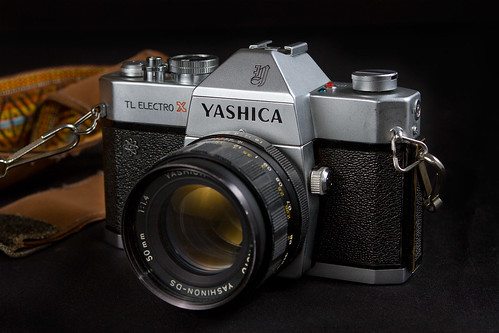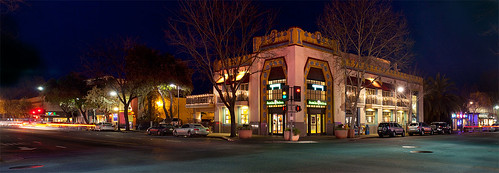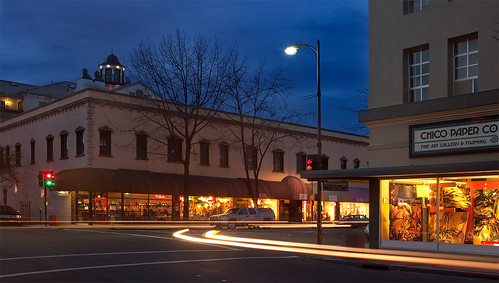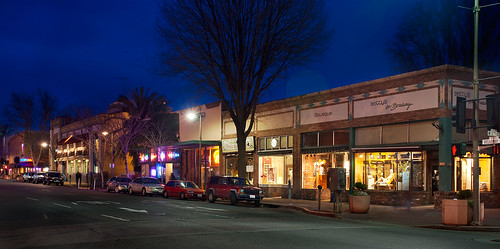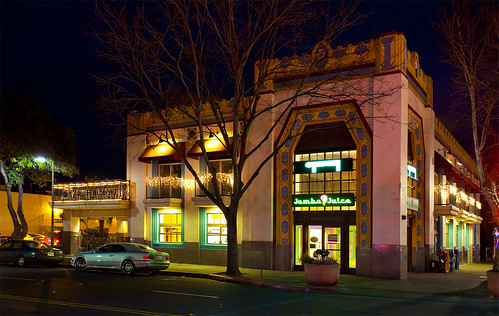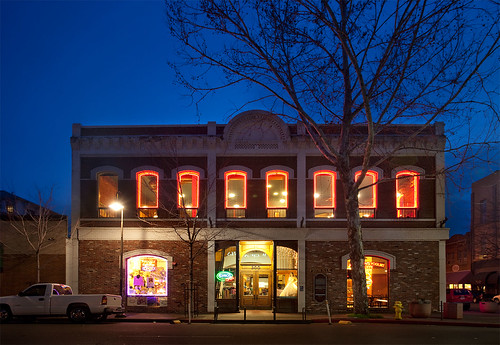My book of assignment photography, Five Assignments, won an honorable mention in the Commercial Category of the Blurb Photography Book Now competition last year.
This book is a compilation of images from five commercial assignments that I found particularly enjoyable, including the Sundial Bridge in Redding, Los Angeles International Airport, lettuce fields in Arizona, and the Chico State university campus.
Tuesday, March 30, 2010
Tuesday, March 23, 2010
Every Camera I Have Ever Owned: Part II
Konica Minolta A2 (2004-2005)
By the beginning of 2004, it was clear that digital cameras were the future, but they still had a long way to go before they either had sufficient resolution to replace my Mamiya 645 or were affordable.
Still, I decided to take the plunge and bought a great little 'prosumer' Konica Minolta A2, an 8 megapixel fixed zoom lens camera.
Konica Minolta A2 Kit (up for sale on eBay)
This was a handy little camera, and was particularly great from macro photography. I used it a lot for wildflower photos and that's where it really excelled. However, it suffered from noise even at ISO 200, and was unusable at ISO 400 or above.
I used it actively for almost two years and kept it around as a backup for a several more years.
California Poppy
Dogwood Blossom
Sundial Bridge
Canon 20D (2005-2007)
By 2005, I realized that, simply from a workflow perspective, I needed to convert to digital full time. Prices were coming down and image quality had finally equaled, if not surpassed 35mm film.
But I had a dilemma. The major DLSR players of the time, as they are today, were Canon and Nikon. I was shooting Mamiya, and was miles above the petty Nikon vs. Canon wars. But it was inevitable that I was going to choose one of the two... and with cameras, once you choose a brand, you are pretty much making a lifetime commitment because you end up with a major investment in lenses that are not interchangeable between brands.
I had absolutely no bias going into the decision since I considered both brands as 'toys' compared to medium format. In the end, I chose to go with Canon, mostly because, at the time, Canon was trouncing Nikon on both image resolution and low noise performance.
I ended up buying an EOS 20D, which was a workhorse of a camera. At 8 megapixels, it wasn't quite the resolution I was looking for, but there was a huge price jump from it to the 16.7 megapixel IDs Mark II, which at the time retailed for about $8000.
Canon EOS 20D (for sale on eBay)
I shot with this camera for a couple of years before relegating it to backup body status. But by that time, I had accrued enough Canon glass to make switching to Nikon prohibitive, even if I had wanted to. I finally sold the 20D on eBay exactly a year ago.
Great Egret
The Delta King at Dusk
Panorama of Rio Vista Bridge (one of the last images taken with my Canon 20D)
Canon 5D (2007-2009)
By 2007, it was clear that the 20D was insufficient for my business. Fortunately, the 12.8 megapixel Canon 5D had come down enough in price by then to make it a logical replacement. This camera was my main body longer than any other I've owned since I went pro, and there are more images in my image database taken with the 5D than any other camera.
This was a great camera to use; fast and flexible, and it produced images of stunning quality. I used it fro everything from landscapes to architectural work, and it always performed flawlessly. I finally parted with it last December.
Mt. Lassen from Manzanita Lake
Moon and the Theme Building at LAX
Renaissance Tower, Sacramento
Canon 5D Mark II (2009-)
By early last year, it was becoming clear that my 5D, though still producing wonderful images, was getting a bit long in the tooth with respect to certain features. In particular, I really needed a camera with automatic sensor cleaning, since the 5D full frame sensor attracted dust like a veritable magnet. The 21.1 megapixel 5D Mark II fit the bill for me perfectly, maintaining a full frame sensor, but upping the resolution dramatically and providing a larger LCD, sensor cleaning and a number of other features.
Yesterday marked the one year anniversary of my 5D Mark II, and it's served me pretty much flawlessly for the past year, providing truly stunning image quality.By early last year, it was becoming clear that my 5D, though still producing wonderful images, was getting a bit long in the tooth with respect to certain features. In particular, I really needed a camera with automatic sensor cleaning, since the 5D full frame sensor attracted dust like a veritable magnet. The 21.1 megapixel 5D Mark II fit the bill for me perfectly, maintaining a full frame sensor, but upping the resolution dramatically and providing a larger LCD, sensor cleaning and a number of other features.
Big Chico Creek in the Fall
Walnut Zucchini Pizza
Sundial Bridge Abstract
Canon 7D (2009-)
I'll be the first to admit that the 7D wasn't a necessary purchase. My old 5D was still producing great images, even though it had been relegated to backup body status.
But the 7D came with a number of new features, including a new (and as it turns out, occasionally problematic) autofocus system. So I sold the 5D and took the plunge on the 7D. And although there has been a bit of a learning curve on the new AF system, for the first time ever I actually have a 'backup' body that I actually use.
And here's the reason: Because the 7D uses an APS (cropped) sensor, I get different results with lenses on it than I do with the 5D II. I've found that I pretty much keep my 100-400mm zoom attached to the 7D when I'm in the field and the 28-70mm when I'm in the studio. This gives me a wide range of focal lengths with two bodies immediately at hand. That's something I've never really done before, and the 7D makes a logical way to work.
Pintail Duck
Cow Grazing Below Bully Choop Mountain
Cattle Grazing on hill near Newville
Canon 450D/XSi (2010-)
The Canon XSi is the newest member of my family of cameras, purchased only last month. But with a 5D Mark II and a 7D, what could I possibly need a 2 year old entry-level DSLR for?
As a way to diversify my work and my business, I recently purchased a 24 foot tall telescoping camera stand. In testing the new stand, I quickly realized that I wasn't terribly comfortable putting a $1700 camera with a $1000 lens on it on top of a swaying 24 foot tall pole. So, I bought the cheapest Canon DSLR that would allow me to control it remotely from the ground. I promise to do a post on this set up soon.
However, I've discovered that this is a neat little camera and actually produces fantastic images. Though I still use it primarily for pole shots, its nice to know that I have a capable body as an emergency backup.
Peach Orchards in Bloom
Panorama of Almond Orchards and Fields
Tuesday, March 16, 2010
Every Camera I Have Ever Owned: Part I
I admit it: I love camera gear. Every time I go to a bookstore, I spend most of my time reading camera magazines, looking at all the new gear that is out. I pour over camera reviews on dpreview.com. I love new cameras, old cameras, you name it. I used to even have a small collection of classic cameras.
So, though it really doesn't have much to do with the purpose of this blog, and probably isn't that interesting for the intended audience of this blog, I thought it would be interesting (or at least nostalgic) to list every SLR camera I've owned since I was a teenager.
Imagery-wise, I have a few nice studio shots that I've taken of a few of the cameras, especially the ones that I own now. For most of the cameras, however, the images I have are those I took when I was preparing to sell them on eBay. Amazingly, I actually have photos of every SLR I've ever owned.
Yashica TL Electro X (1973-1979)
I've already done a blog post on my first camera, a Yashica TL Electro X, so I won't say much more about it except that this is the one camera I still have after all these years. Most of the others were sold to fund the purchase of the next camera. I bought this camera in 1973 and gave it to my father around 1979 or 1980. He used it for many years before returning it to me a couple of years ago.
This was a decent little camera, but I quickly realized that it wasn't really ideal for the type of landscape photography work I wanted to do. I needed to use manual exposure mode a lot, and it was not ideally set up to give that level of control to the photographer.
Still, this camera went with me to the top of San Jacinto Peak, to Yosemite Valley and Hetch Hetchy, and all over the Sierra Nevada. I got some wonderful images with this camera, and have to credit it for getting me into photography again. I've been taking photos steadily since I bought this camera.
Minolta Maxxum 7 (2002-2003)
Over Christmas break in 2001, I drove down to visit my parents in San Diego. I went down the east side of the Sierra Nevada with the intent of spending a few days photographing the east side on my way.
I distinctly remember setting up to do some sunrise exposures in the Alabama Hills (see above image) and being fed up with the limitations of the Maxxum 500si. I resolved there and then that I would buy a new camera for myself when I got to San Diego.
Mamiya 645 Pro (2003-2005)
So, though it really doesn't have much to do with the purpose of this blog, and probably isn't that interesting for the intended audience of this blog, I thought it would be interesting (or at least nostalgic) to list every SLR camera I've owned since I was a teenager.
Imagery-wise, I have a few nice studio shots that I've taken of a few of the cameras, especially the ones that I own now. For most of the cameras, however, the images I have are those I took when I was preparing to sell them on eBay. Amazingly, I actually have photos of every SLR I've ever owned.
Yashica TL Electro X (1973-1979)
I've already done a blog post on my first camera, a Yashica TL Electro X, so I won't say much more about it except that this is the one camera I still have after all these years. Most of the others were sold to fund the purchase of the next camera. I bought this camera in 1973 and gave it to my father around 1979 or 1980. He used it for many years before returning it to me a couple of years ago.
In my early 20's I moved out to a commune, and departed the world of photography. Though I did many things in my career, I didn't take up photography seriously again until 1998, when I spent the summer living in Idyllwild, in the San Jacinto Mountains of southern California.
Minolta Maxxum 500si (1998-2002)
I had just finished doing some lucrative utility company consulting, and had always been attracted to Idyllwild, so I rented a cabin and spent the summer hiking and goofing off. I was immediately taken by the stunning beauty of the area, and decided to buy a camera and start taking pictures.
I bought a copy of Popular Photography and turned to the ads in the back of the magazine and ordered a camera over the phone. Internet-based eCommerce wasn't exactly where it is today.
The camera I selected was the Minolta Maxxum 500si, mostly because it was the cheapest SLR that would allow me to do long exposures using a cable release. I wanted to do night photography, and the 500si was the cheapest thing that did what I wanted.
My Minolta Maxxum 500si (up for sale on eBay)
This was a decent little camera, but I quickly realized that it wasn't really ideal for the type of landscape photography work I wanted to do. I needed to use manual exposure mode a lot, and it was not ideally set up to give that level of control to the photographer.
Still, this camera went with me to the top of San Jacinto Peak, to Yosemite Valley and Hetch Hetchy, and all over the Sierra Nevada. I got some wonderful images with this camera, and have to credit it for getting me into photography again. I've been taking photos steadily since I bought this camera.
Sunrise on El Capitan, Yosemite Valley (Minolta Maxxum 500si, Kodachrome 64)
Shooting Stars in the San Jacinto Mountains (Minolta Maxxum 500si, Kodak Royal Gold 200)
Sunrise in the Alabama Hills
(one of the last photos taken with my Maxxum 500si, Kodak Max 400)
(one of the last photos taken with my Maxxum 500si, Kodak Max 400)
Minolta Maxxum 7 (2002-2003)
Over Christmas break in 2001, I drove down to visit my parents in San Diego. I went down the east side of the Sierra Nevada with the intent of spending a few days photographing the east side on my way.
I distinctly remember setting up to do some sunrise exposures in the Alabama Hills (see above image) and being fed up with the limitations of the Maxxum 500si. I resolved there and then that I would buy a new camera for myself when I got to San Diego.
I went to a camera store in downtown San Diego (probably the same place I bought my old Xashica) and bought a Minolta Maxxum 7. I think it cost me about $550, which seems a laughably small amount given what high end digital cameras cost today.
This was without a doubt the most ergonomic camera I've ever owned. It was a real photographer's camera; flexible, easy to use, capable. Within about six months of purchasing this camera, I decided that I wanted to do photography professionally.
My Minolta Maxxum 7 (up for sale on eBay)
My Minolta Maxxum 7 kit, including Tamron 24-135mm Macro Zoom, Minolta AF 100-300mm Zoom, Tokina 20-35mm Zoom (which was killer sharp)
I also took some of my favorite photos of all time with this camera, even though I only owned it for a year. No camera since has felt as much a part of me as did this camera. Minolta never got the credit it deserved for such a great 35mm SLR camera.
Sutter Buttes (Minolta Maxxum 7, Tokina 20-35mm lens, Fuji Velvia)
JW Ranch (Minolta Maxxum 7, Tamron 28-200mm lens, Fuji Velvia)
Sunset and Bare Oaks, New Years Day, 2003
(one of the last images taken with my Minolta Maxxum 7, Tamron 24-135mm lens, Fuji Velvia)
(one of the last images taken with my Minolta Maxxum 7, Tamron 24-135mm lens, Fuji Velvia)
Mamiya 645 Pro (2003-2005)
On New Years Day 2003 I was taking photos along La Porte Road near Bangor in Butte County, in the foothills at the eastern edge of the Sacramento Valley, when I ran into another photographer shooting with a 4x5 camera. We got to talking, and he convinced me that I'd never make it professionally shooting 35mm film. He felt that you needed to shoot large format (4x5) in order to be competitive. I didn't quite believe that, but he did convince me that, as much as I loved my Maxxum 7, that I needed to move to a larger format to be successful.
So I immediately went out and bought a Mamiya 645 Pro kit, including lenses, gadgets and whatnot on eBay. I think the whole kit cost me about $2500.
Now this was a REAL camera, and a completely different experience from the 35mm cameras I had owned. For one thing, it was huge and heavy. I really built up some arm muscles hauling that camera around It was also fully manual - no auto exposure modes, no auto focus, no auto anything. This really made me learn how to photograph. Though I shot mostly in manual exposure mode with the Maxxum 7, I had no choice here, and learned how to read and adjust exposures very well.
But this was a fantastic camera. Like the Minolta, it was a photographer's camera, though in a different way. Where the Minolta was designed to be easy to handle, the Mamiya was designed to be a precise tool, not an easy to use one. And as with the Minolta, I took some of my favorite photos of all time with this camera.
I actually held onto it for a number of years after I stopped shooting with it, just because I loved it so much.
In Part II, I'll talk about my switch to digital, as well as the explosion of camera buying that's happened in the past year!
So I immediately went out and bought a Mamiya 645 Pro kit, including lenses, gadgets and whatnot on eBay. I think the whole kit cost me about $2500.
Mamiya 645 Pro, with 55-110mm zoom lens
Mamiya 645 Kit, including 55-110mm zoom, 105-210mm zoom, 45mm lens, 80mm lens, and 500mm lens.
Now this was a REAL camera, and a completely different experience from the 35mm cameras I had owned. For one thing, it was huge and heavy. I really built up some arm muscles hauling that camera around It was also fully manual - no auto exposure modes, no auto focus, no auto anything. This really made me learn how to photograph. Though I shot mostly in manual exposure mode with the Maxxum 7, I had no choice here, and learned how to read and adjust exposures very well.
But this was a fantastic camera. Like the Minolta, it was a photographer's camera, though in a different way. Where the Minolta was designed to be easy to handle, the Mamiya was designed to be a precise tool, not an easy to use one. And as with the Minolta, I took some of my favorite photos of all time with this camera.
I actually held onto it for a number of years after I stopped shooting with it, just because I loved it so much.
Late Afternoon Oak (Mamiya 645 Pro, Mamiya 105-210 f/4.5 Zoom, Fuji Velvia 50)
Rice Field Panorama (Mamiya 645 Pro, Mamiya 55-110 f/4.5 Zoom, Fuji Velvia 50)
Aspens near Grant Lake (Mamiya 645 Pro, Mamiya 55-110 f/4.5 Zoom, Fuji Velvia 50)
In Part II, I'll talk about my switch to digital, as well as the explosion of camera buying that's happened in the past year!
Tuesday, March 9, 2010
Best Time to Photograph Wildflowers
Every year around this time, I start getting ready for the wildflowers. Though wildflower photos don't sell much, I just enjoy their beauty and use photography as an excuse to get out and see them (don't tell anyone I said that).
And every year around this time, I start trying to remember when the peak of the wildflower bloom is in and around the Sacramento Valley.
I have hundreds of photos on my website of wildflowers, from the Sacramento Valley. So I went though my image database, and grouped all the images of wildflowers by the day of the year they were taken. I then grouped the images by the week of the year and came up with the following chart, showing that the peak of the wildflower bloom (or at least of me photographing the wildflower bloom) occurs at the end of March and very beginning of April.
That explains why I'll be in the field almost the entire time from March 26th through April 4th this year.
Here are a few of my favorite wildflower photos from around the Sacramento Valley:
And every year around this time, I start trying to remember when the peak of the wildflower bloom is in and around the Sacramento Valley.
I have hundreds of photos on my website of wildflowers, from the Sacramento Valley. So I went though my image database, and grouped all the images of wildflowers by the day of the year they were taken. I then grouped the images by the week of the year and came up with the following chart, showing that the peak of the wildflower bloom (or at least of me photographing the wildflower bloom) occurs at the end of March and very beginning of April.
That explains why I'll be in the field almost the entire time from March 26th through April 4th this year.
Here are a few of my favorite wildflower photos from around the Sacramento Valley:
Owl Clover on Table Mountain
Wild Poppy in Upper Bidwell Park
Wildflower Panorama near Chico
Tidy Tips at Vina Plains Preserve
Tuesday, March 2, 2010
Downtown Chico at Night
No one will deny at Chico is a 'cute little town.' People particularly like downtown Chico. But that doesn't necessarily make it photogenic. There are certainly parts of downtown Chico, such as the plaza, that are photogenic - I posted some photos of the downtown plaza in a previous post, "Merry Christmas Chico".
I few weeks ago, I decided to take another shot at photographing parts of downtown at night.
In some ways night photography is easier than daytime photography in a place like downtown Chico because you don't have to contend with blight sunlight and deep shadows. The lights of the buildings at night also tend to look more colorful and interesting than storefronts during the daytime.
However, night photography can also be more challenging in some ways. Buildings and blocks lacking interesting lighting can make dull subjects. But the biggest problem is often cars. Car headlights can ruin a street scene by being too light. Cars moving through the scene can leave streaks of light which can be interesting or intrusive.
Still, over a period of an hour or so on a Saturday night, I managed to capture a few representative images of Chico's downtown area. I also witnessed a car turning the wrong way on a one way street, a couple of cars completely running red lights, and large numbers of people in various states of drunkenness. Ah, Chico.
I few weeks ago, I decided to take another shot at photographing parts of downtown at night.
In some ways night photography is easier than daytime photography in a place like downtown Chico because you don't have to contend with blight sunlight and deep shadows. The lights of the buildings at night also tend to look more colorful and interesting than storefronts during the daytime.
However, night photography can also be more challenging in some ways. Buildings and blocks lacking interesting lighting can make dull subjects. But the biggest problem is often cars. Car headlights can ruin a street scene by being too light. Cars moving through the scene can leave streaks of light which can be interesting or intrusive.
Still, over a period of an hour or so on a Saturday night, I managed to capture a few representative images of Chico's downtown area. I also witnessed a car turning the wrong way on a one way street, a couple of cars completely running red lights, and large numbers of people in various states of drunkenness. Ah, Chico.
Subscribe to:
Comments (Atom)








